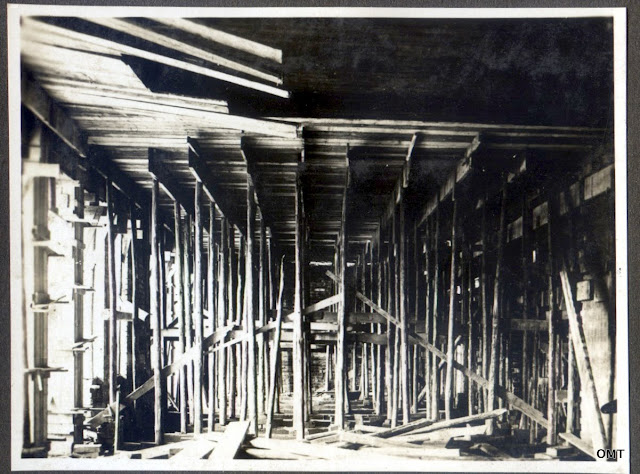“It’s not enough to have talent. You also have to be Hungarian.”
Robert Capa
During the 1930s a cement factory was built in Felsogalla, 48 km west of Budapest, near the Slovakian border and the heartland of Hungary’s coal and bauxite industry. When it was finished this small presentation album was made, containing 21 photographs showing the construction of the refinery and some scenes of Budapest. There is no information as to who the photographer was though he or she was obviously a professional and when you look through the album you get an idea of why Hungary was internationally a centre of photography in the 1920s. America, France and the UK got the attention but some of the most influential photographers came out of Hungary; Brassaï, Robert Capa, Kertész, Moholy-Nagy and Martin Munkácsi, and they became famous because they left the country. The ideas they brought with them might not have been innovative so much as standard practice back home.
The album was produced by the Hungarian General Coal Mining Company, which was the country’s largest mining corporation between the 1890s and 1946, when it was formally subsumed under state control. At its height, around the time these photos were taken, coal and bauxite mining were the backbone of the Hungarian economy, which had been broken by the defeat and break-up of the Austro-Hungarian Empire after 1918. The region known as North Transdanubia provided most of the country’s depleted wealth. Today it is one of the poorer regions.
The photographs show the construction of the factory as well as railway stations, canals, a church and schools. This was a major development project and albums for such projects were common before cheaper printing costs made it easier to produce books or catalogues. Just as commonly they have been broken up so if you find a single photograph of a railway bridge wrapped in scaffolding it probably came from a similar album; complete ones like this are fairly rare.
They belong to that often overlooked genre of documenting grand projects that began in Paris during Haussmann’s reconstruction during the 1850s, when Charles Marville was sent out to document the process. The Paris Opera was photographed from the first preparations, providing a narrative that revealed the complexity of the architecture and engineering lost on anybody who simply admired the building on its completion. There is a loose narrative in this album. It begins with the construction of the main plant at Felsogalla, depicts buildings such as the girls’ school at two stages of construction and moves to Budapest. You’ll notice the workers are for the most part reduced to small silhouettes. The idea behind the album was to give a sense of the size of the project, which essentially involved the construction of a whole new civic area then linking it to Budapest and ultimately Leipzig.
What really matters though are the images. Sharp focus, narrow depth of field, high contrast and wide lens; you can guess they come from Eastern Europe, the part of the world that gave us a subjective, artificial photography and cinema. Notice for example how black and solid the shadows appear. The photographer was less interested in providing factual evidence than in creating a particular ambience. When I think of ‘modernist photography’ it is the imagery from Eastern Europe that comes to mind. It was colder and cleaner than the stuff coming out of America and Western Europe and today it looks a lot darker, metaphorically speaking, as if the photographers looked at the world in a particularly dark and sceptical way.
If I could read Hungarian it wouldn’t be too hard to find out who the photographer was. Documents to do with the project ought to have been submitted to the national archives at some point. Most likely he or she ran a professional studio in Budapest with a good reputation or was a respected photojournalist working for a newspaper or one of the dozens of pictorial magazines circulating at the time. I go for the latter since there isn’t much evidence of artificial lighting, which you’d expect a studio photographer to bring along, and the photographs have that distinct graphic quality discussed above that the magazines sought and promoted.
When the magazine Modern Photography compiled a list of the 100 best contemporary photographers in 1931, eight were chosen from Hungary, making it the most represented country in the survey. Critics and art historians have tried to put a finger on what made that possible but their cases are unconvincing, mostly you suspect because they are looking for answers in the wrong places. It is possible that this is a lost album by an internationally renowned photographer but you only have to look a little deeper into the history of Central European photography to realize how many photographers working with an approach regarded as cutting edge then are more or less forgotten today. This could have come from any of the fifty or so photographers working in Budapest or someone else from Szeged, Pecs or even Tatabanya, the closest city to Felsogalla.
The photographs in the gallery have been arranged in the same sequence as the book. Some have been scanned showing the album page. The album measures 16x13cm, the average size of the prints are 10x6.5cm.
 |
| WORKING IN A COALMINE |








An excellent find!
ReplyDeleteYes, I was happy. I'd still like to track down the photographer.
Delete